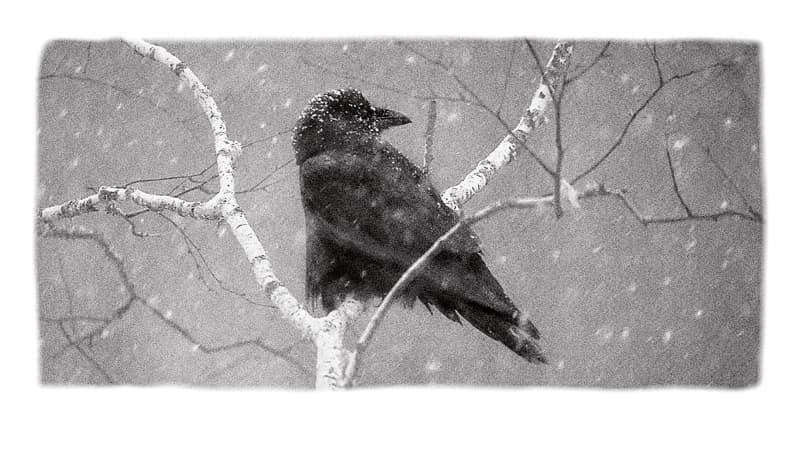
Jim Brandenburg travelled the world as a photographer with National Geographic magazine for more than 30 years. His work has been published in The New York Times, Life and Time, among others, and he has won numerous awards, including Kodak Wildlife Photographer of the Year by the Natural History Museum and BBC Wildlife Magazine. He is the chair of this year’s competition. Every month Jim will share the story behind one of his nature images
I have a lot of respect for ravens. They’re nearly impossible to photograph as they’re incredibly intelligent, elusive and highly suspicious. The grey jay, which is also a member of the crow family, is just as intelligent, but has virtually no fear and is extremely trusting. In fact, I have had these birds literally eating out of my hand. I think ravens are exceedingly mistrustful because they have been persecuted through several generations of people shooting at them, so any time that I can make a decent photograph of a raven I’m really quite happy. On this particular day I was very happy, not only because I got so close but also because the snowfall meant that the picture had a dark mood to it.
This photograph was shot just outside my home, which is called Ravenwood. There wasn’t time to think about the mood of the photograph because the raven stayed for less than 30 seconds and it’s probably the only frame I have. It’s not like taking a still-life shot where you can contemplate it for 10-15 minutes – this was instantaneous and I had to move quickly. A photograph can speak volumes about mood without me being in that particular mood. For example, I could have been exceedingly happy when taking this photograph, yet the picture has a bit of darkness to it – a heavy mood. One of the reasons ravens have a bad reputation is because the birds are often seen scavenging, so I think the weather and the raven imply a dark mood to people.
I was particularly exhilarated that I got such a close-up shot of a raven. It might have been slightly underexposed, as I remember the image being just slightly dark, but maybe that also gives such a foreboding feel to it.

The photograph was shot in colour, but it appears almost black & white. It was a very grey, dark day. I think I might have it in both black & white [pictured here] and colour versions, but even the colour version has very subtle colours. I did very little in the way of editing. There’s always a tiny bit of contrast control needed, plus burning and dodging for small subtle areas, but nothing out of the ordinary. The image is full frame, so it hasn’t been cropped. I often take the colour out of images because, as in this raven picture, I would rather do this than take the chance that the colours will change when it is published or sent to another place. I remember the colours
in this picture were particularly subtle. I prefer this image to be more monochromatic, as the white birch tree, the black raven and the white snow fit the mood of the photograph.
The composition was instinctive. I don’t really think about composition now, as I find that I just do it – like tying your shoes or many other things you’ve done in life thousands of times, it’s done subconsciously. When you reach the point where you have a certain style or point of view, you seek out images that fit a certain pattern. I do things instinctively in the realm of art and I use the camera like a paintbrush, often using a lot of emotion and a lot of energy. I grab the shot, and sometimes it works and sometimes it doesn’t. I do think about composition in a way, but it is really a subconscious decision based on virtually 15 years of looking through a camera.
I would have used a Nikon camera with a 600mm lens, although I’m not sure what model it was. The picture was taken long enough ago that I would have been using film, probably Kodachrome. As I’m working I constantly change my exposure settings for an opportunity that might arise so I don’t have to worry about it when shooting. On a day like this, everything would be virtually the same exposure, especially the half-hour period when it was snowing. I would simply measure the light with a handheld meter and set my camera so I was ready, when the opportunity arose, to take the shot. If I had to worry about exposure at that point it would have been too late.
Jim Brandenburg was talking to Stevie-Ella Keen
To see more of Jim’s images visit www.jimbrandenburg.com







